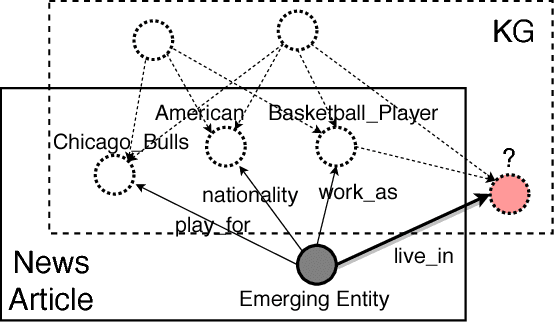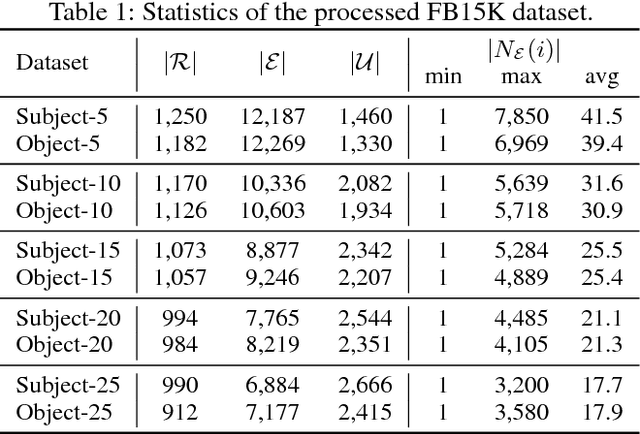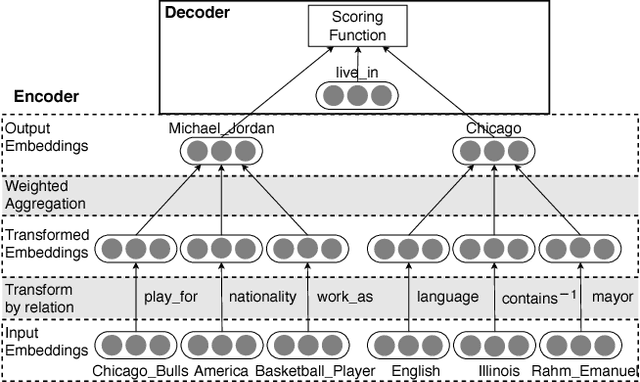Logic Attention Based Neighborhood Aggregation for Inductive Knowledge Graph Embedding
Paper and Code
Nov 04, 2018



Knowledge graph embedding aims at modeling entities and relations with low-dimensional vectors. Most previous methods require that all entities should be seen during training, which is unpractical for real-world knowledge graphs with new entities emerging on a daily basis. Recent efforts on this issue suggest training a neighborhood aggregator in conjunction with the conventional entity and relation embeddings, which may help embed new entities inductively via their existing neighbors. However, their neighborhood aggregators neglect the unordered and unequal natures of an entity's neighbors. To this end, we summarize the desired properties that may lead to effective neighborhood aggregators. We also introduce a novel aggregator, namely, Logic Attention Network (LAN), which addresses the properties by aggregating neighbors with both rules- and network-based attention weights. By comparing with conventional aggregators on two knowledge graph completion tasks, we experimentally validate LAN's superiority in terms of the desired properties.
 Add to Chrome
Add to Chrome Add to Firefox
Add to Firefox Add to Edge
Add to Edge